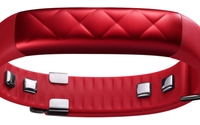 Data needs connections.
Data needs connections.
The more
connected devices there are the more data that can be accumulated, analyzed and used.
And much of the useful consumer data of the Internet of Things will be coming from wearable fitness
trackers.
But the number of U.S. adults who see fitness trackers as becoming more popular is declining, based on a new study.
The study was conducted by CivicScience and comprised an
online questionnaire answered by 19,000 people over the last year and weighted against U.S. Census figures.
Overall, more than half (56%) of adults say wearable activity will become more
popular or stay the same over the next year. Here’s the overall view of how adults see wearable activity/fitness trackers in popularity over the next year:
- 34% -- More
popular
- 22% -- Stay the same
- 11% -- Less popular
- 33% -- Not sure
However, compared to the same quarter a year ago, more than a third (37%) of adults last
year thought fitness trackers would become more popular but this year it is fewer than a third (31%).
The reason this matters is that the more information that comes from trackers, the more
insights can be extracted for useful marketing.
One of the values is in creating a central depository for all data from devices, which an executive from Under Armour recently detailed at the
MediaPost IoT: Shopping conference, as I wrote about here at the time (Under Armour
& the Wearables Info Platform).
“The value is in the community,” said Dough Ziewacz, head of North America Digital Media & Advertising at Under Armour Connected
Fitness.
The other noteworthy piece of data in the CivicScience survey is that most (71%) adults currently are not likely to purchase a wearable fitness tracker in the next year. This compares
to 11% who are likely to buy one and 8% who say they already have one.
Of course, some tracking activity is migrating to smartwatches so many consumers may be enticed into activity tracking
there.
And that will cause more connections to feed the IoT data machine.